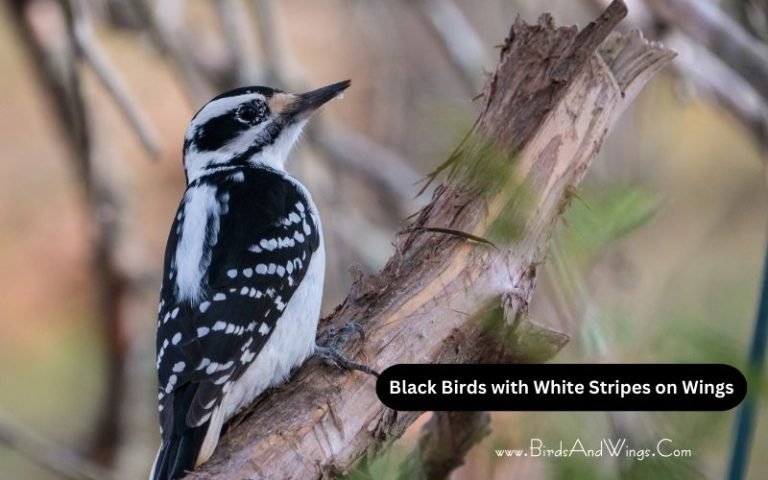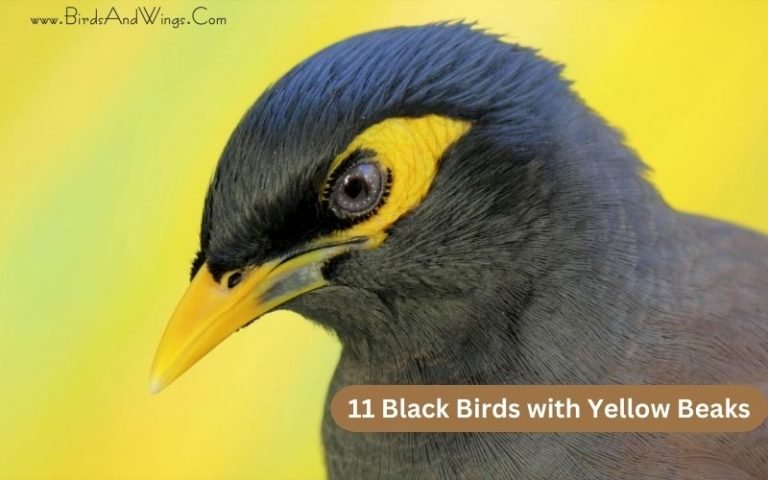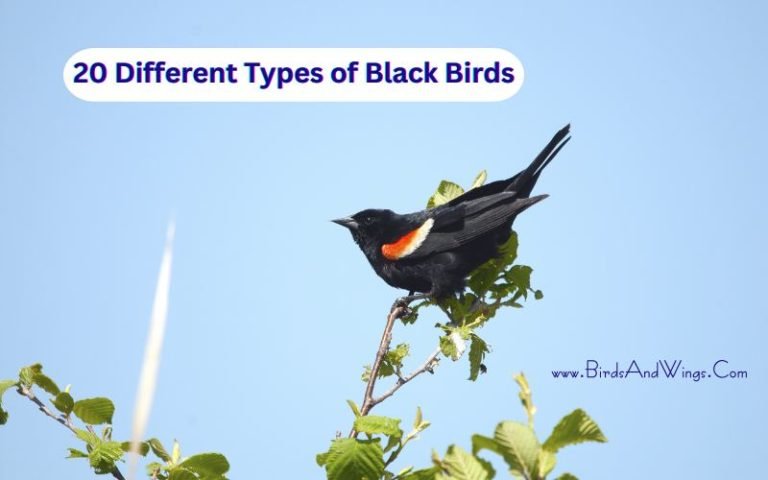10 Hawks With White Heads – Identification and Information Guide
Hawks with white heads are among the most intriguing birds in the Bird Kingdom. As a bird watcher, you should learn more about the majestic Hawks which grace the sky above us.
In this article, you will learn about the Hawks with white heads and their conservation status to better understand them.
Top 10 Hawks With White Heads
Hawks with white heads are known for their large sizes and visibly white heads. Many of them have brightly colored beak bases and dark underbody parts, the contrast making them stand out in the wild.
Due to the rare appearances of the White Headed Hawks, a lot of the species are endangered. Moreover, their declining population makes it hard for scientists to determine many of their characteristics.
Also, they are not only hunted for poaching, but many believe their bones hold healing properties.
To further explain these fascinating birds, here is a list of 10 White-Headed Hawks and details on their habits.
1. Rough Legged Hawk

- Scientific Name: They are known as Buteo Lagopus.
- Lifespan: The Rough-Legged Hawk lives up to roughly 15 years.
- Size: Their sizes range from 18″ to 24″. They have white heads, with the females being larger than the males. The females weigh around 2.3 to 2.8 pounds, while the males weigh around 2.2 pounds. On their legs, they have feathers that reach their toes. They also have black patches on their wrists and hints of white on the base of their tails.
- Wingspan: Their wingspan reaches till 47” to 60”.
- Diet: The Rough Legged Hawk mostly feasts on rodents, but when they are breeding, they prefer lemmings. During winter, they hunt for wider food ranges like birds, frogs, and insects. They fly around areas to search for prey or are perched on trees to observe potential prey.
- Behavior: They mainly breed around tundras, where they find lemmings for their hatchlings. Their UV vision helps them spot urine traces from rodents, and they follow them toward their prey. The Rough Legged Hawk lays blue eggs with brown speckles and mates for life.
- Conservation Status: The Rough Legged Hawks are found mostly in the cold regions of the Arctic. The population status fluctuates, but they are in no imminent danger overall.
2. Osprey

- Scientific Name: Their scientific name is Pandion Haliaetus.
- Lifespan: The Rough-Legged Hawk lives for 15 to 20 years.
- Size: Their sizes range from 19.7″ to 26″. They have small white heads but large wingspan. With sharp talons and hook-like beaks, they look a lot like the Bald Eagle.
- Wingspan: Their wingspan reaches around 50” to 70”
- Diet: Their diet consists mostly of fish like flounder, smelt, and mullet. However, when fish are scarce, they opt for small mammals like birds and reptiles.
- Behavior: To hunt, they hover around water bodies. Once they spot fish, they target the area, and once a fish is near the surface, it scoops up the fish with its talons. During winter, they move to the USA or Argentina. The Bald Eagles are hostile towards Ospreys and may chase them to snatch food.
- Conservation Status: When the usage of pesticides became widespread, it endangered the Ospreys. The DDT from pesticides impacted the Ospreys, causing them to die out. However, after DDT was banned, the population of Ospreys became stable again.
3. White Hawk
- Scientific Name: Their scientific name is Pseudastur Albicollis.
- Lifespan: The White Hawk can live up to 20 years.
- Wingspan: They have a wide wingspan of around 1 meter. Their wings are vast and round, giving them a wider wingspan.
- Size: The White Hawks weigh around 605 to 908 grams. Females are heavier at 1.8 pounds, while males are 1.4 pounds. They have white heads, underbodies, underwings, and black feathers on their tails and wings.
- Diet: Their preferred food is reptiles. They also like to eat lizards, snakes, rats, bats, opossums, etc. On rare occasions, they may even eat fish. The White Hawk spends most of its time flying, so if you look up in the sky, you may spot a few.
- Behavior: They have a unique hunting technique. They tend to follow monkeys and scoops to eat any reptiles the monkeys shoo away from the areas. The White Hawks are also perched atop trees, looking for prey. Once they spot one, they swiftly snatch the prey away.
- Conservation Status: Even though the White Hawks are relatively common to spot in most countries, they are not risk-free. Many scientists who study the bird are starting to notice declining populations because their habitats are being destroyed.
4. White Necked Hawk
- Scientific Name: Their scientific name is Buteogallus Lacernulatus.
- Lifespan: There is no definite lifespan for the White Necked Hawk.
- Size: They can grow up to 19″ in size. They have snow-white heads with grayish underparts and whitetails. Their beaks have a yellow base.
- Wingspan: Their wingspan reaches around 50” to 70”
- Diet: The White Necked Hawks are omnivores that feast on insects, rodents, birds, reptiles, etc. Like the White Hawk, the White Necked Hawk also follows monkeys to snatch up the reptiles chased out by the monkeys.
- Behavior: To hunt, they hover around water bodies. Once they spot fish, they target the area, and once a fish is near the surface, it scoops up the fish with its talons. During winter, they move to the USA or Argentina. The Bald Eagles are hostile towards Ospreys and may chase them to snatch food.
- Conservation Status: The loss of habitats has endangered the White Necked Hawk. They are considered to be vulnerable by authorities and are highly fragmented. Scientists predict their population to be around 2,500 to 9,999.
5. Mantled Hawk

- Scientific Name: They are scientifically known as Pseudastur Polionotus.
- Lifespan: There are no definite estimates of their lifespan.
- Size: Their sizes are around 470 to 510 mm, and the females are slightly larger than their male counterparts. The Mantled Hawk is mostly white except for its black wing tips. Their head seems larger than their bodies, giving them a unique look. The markings around their eyes give them a mask-like look.
- Wingspan: Their wings reach up to 46.4″ to 50.7″.
- Diet: Like other hawks, the Mantled Hawks sit and wait for their prey. Their diet includes small birds, lizards, and rodents.
- Behavior: Mantled Hawks are found in Brazil, Paraguay, Argentina, and Uruguay. Their calls are piercing, making a ‘new’ sound. They prefer foothills or places near the seas. They perch above ground to search and swoop for prey.
- Conservation Status: The Mantled Hawks are endangered due to habitat loss due to rapid urbanization. While they can survive in fragmented forests and open patches, extensive studies are still going on to save the birds. The current population is between 3,500 to 15,000, making this bird nearly threatened.
6. Hawaiian Hawk
- Scientific Name: They are also known as Buteo Solitary.
- Lifespan: They can live roughly for 17 years.
- Size: They are around 16″ to 18″ long, with the females being longer. They have three toes which face forward and one backward, and their talons can rip prey into shreds. Adult birds have yellowish talons.
- Wingspan: Their wings can span up to 39.7″.
- Diet: Native to Hawaii, they feast upon the Hawaiian Honeycreepers, Nene Chicks, and even the Hawaiian Crow. They also like to eat rodents.
- Behavior: Even though they perch on trees to wait for prey, they may even dive midway through their flight if they spot prey. They are territorial and solitary, coming together only to breed with their mate.
- Conservation Status: The Hawaiian Hawk is native to Hawaii and is known as ‘Io’ in the islands due to their calls. Once considered royalty among birds by the people of Hawaii, the Hawaiian Hawks decreased significantly in population due to illegal hunting and poaching. The current population stands at 3,000 birds.
7. Ferruginous Hawk
- Scientific Name: They are known as Buteo Regalis.
- Lifespan: The Ferruginous hawks can live up to 20 years in the wild.
- Size: They can grow up to 27″. They are known to be regal looking with their white head with an iron-rust plumage which is a callback to their name’s meaning. In the air, they create a V-shape.
- Wingspan: Their wingspan can range from 48″ to 60″.
- Diet: They mostly prefer to eat small to medium-sized animals like ground squirrels, small jackrabbits, kangaroo rats, etc.
- Behavior: They are one of the largest hawks in North America, and many even confuse them as eagles. However, unlike most raptors, the Ferruginous Hawks are not afraid of humans. In fact, they even allow humans to come close to them during non-breeding seasons. They hunt by perching on top of trees or wait near active burrows for the rodents to come out.
- Conservation Status: Due to mass hunting and loss of habitats, the status of the Ferruginous Hawks is threatened. Less than 4,000 pairs are alive, but the population is rapidly declining.
8. Gray Goshawk
- Scientific Name: They are also known as Accipiter novaehollandiae.
- Lifespan: When in captivity, they can live up to 12 years.
- Size: They can grow up to 22″. They are large and pure white, with the females being twice as heavy as the men. The Gray Goshawk is found in Australia, and due to their snowy white plumage, they are considered to be rare.
- Wingspan: Their wingspan can reach up to 43″.
- Diet: They hunt small animals like birds and insects. Like other raptors, they perch on trees and wait for their prey.
- Behavior: They are mostly found in Australia’s forests and tall woodlands. The Gray Goshawk mate for life and hence, are monogamous.
- Conservation Status: Due to deforestation, the Gray Goshawk is losing its habitat and becoming endangered. Accidents with power lines and pesticide poisoning is also a threat to them. There are less than 110 pairs left in Tasmania.
9. Black Faced Hawk
- Scientific Name: They are known as Leucopternis melanops.
- Lifespan: There is no definite estimate of their lifespan, but it may range up to 12 years, like most hawks.
- Size: They grow up to 15.5″. Black marks around its eyes give them a mask-like look, and they have pure white heads. Around their tail is a distinct white band. Upon closer look, they have an orange band on their beak’s base.
- Wingspan: There is no definite estimate of their wingspan.
- Diet: There is very little information on their diet, but they may eat rodents, snakes, and reptiles like other raptors.
- Behavior: They do not soar but rather glide in flight using fast wing beats. Black Faced Hawks are commonly spotted in the mornings. They are assumed to be territorial, but there is very little data on their mating habits.
- Conservation Status: They are highly endangered. Not only are they rare to find even for scientists but their sightings are also disputed. However, it is generally believed that they prefer to stay deep within the Amazon rainforest and rarely come out.
10. Long Legged Buzzard
- Scientific Name: They are also known as Buteo Rufinus.
- Lifespan: There is no clear estimate of their lifespan.
- Size: Their sizes range from 20″ to 26″. Their pale long legs are known as buzzards, and they have dark patches on their wings. The Long-Legged Buzzard has a pale, creamy white head and orange tails.
- Wingspan: Their wings can span between 44″ to 64.2″.
- Diet: They fly over agricultural lands to seek out small to medium-sized animals. Long Legged Buzzards like to eat gerbils, pikas, and ground squirrels. They may also feast on rabbits, hares, and hedgehogs.
- Behavior: Long Legged Buzzards make small ‘mew’ calls and are found in pairs or alone. They are active during the day but make roost-like noises at night. They lay white eggs with brown spots on them.
- Conservation Status: It is widely abundant in many countries, so they are not of concern to scientists.
Are There Any Hawks with White Heads Found in Oklahoma?
Yes, there are various species of hawks in Oklahoma with white heads, specifically the Osprey and the Bald Eagle. These majestic birds can be observed soaring through the skies, showcasing their distinctive white head plumage. Their presence adds to the rich biodiversity of Oklahoma, delighting bird enthusiasts and nature lovers alike.
Conclusion
White Headed Hawks are some of the most beautiful and unique birds to live, but their uniqueness also makes them the extinction target. While some species are abundant, others are forced into obscurity due to the loss of habitats and hunting.
As a result, conserving them and knowing more about how the White Headed Hawks are contributing to the ecosystem is becoming challenging.
So, if you want to help them, contact your nearest animal or bird sanctuary and learn about the ways you can contribute to keeping them safe.




![15 Birds With Red Breast [With Pictures]](https://birdsandwings.com/wp-content/uploads/2023/08/Birds-With-Red-Breast--768x480.jpg)


